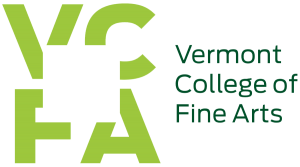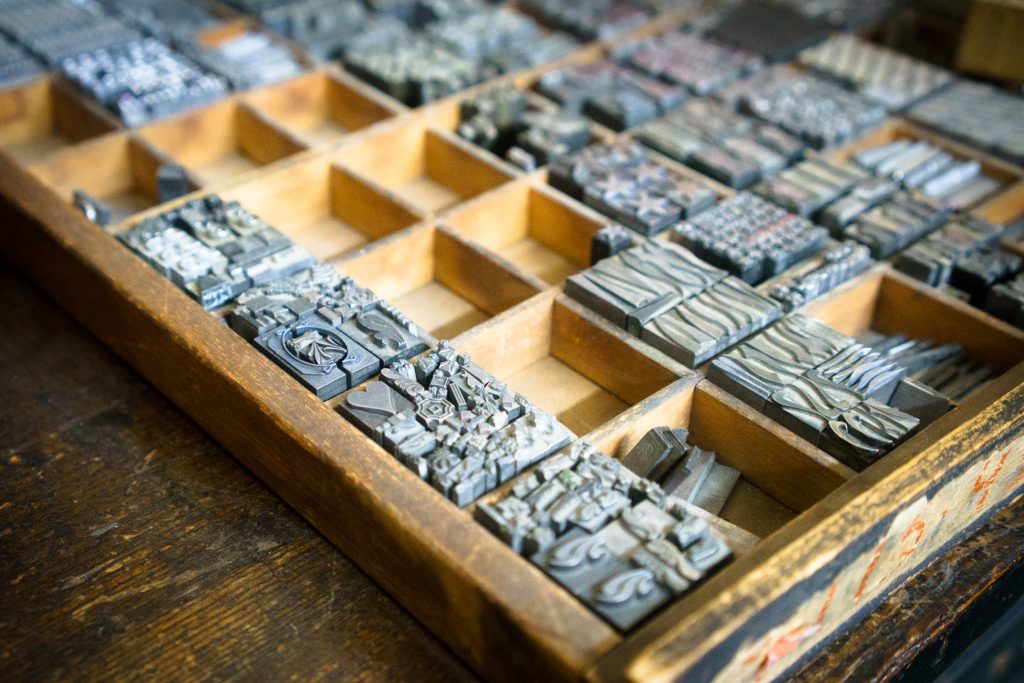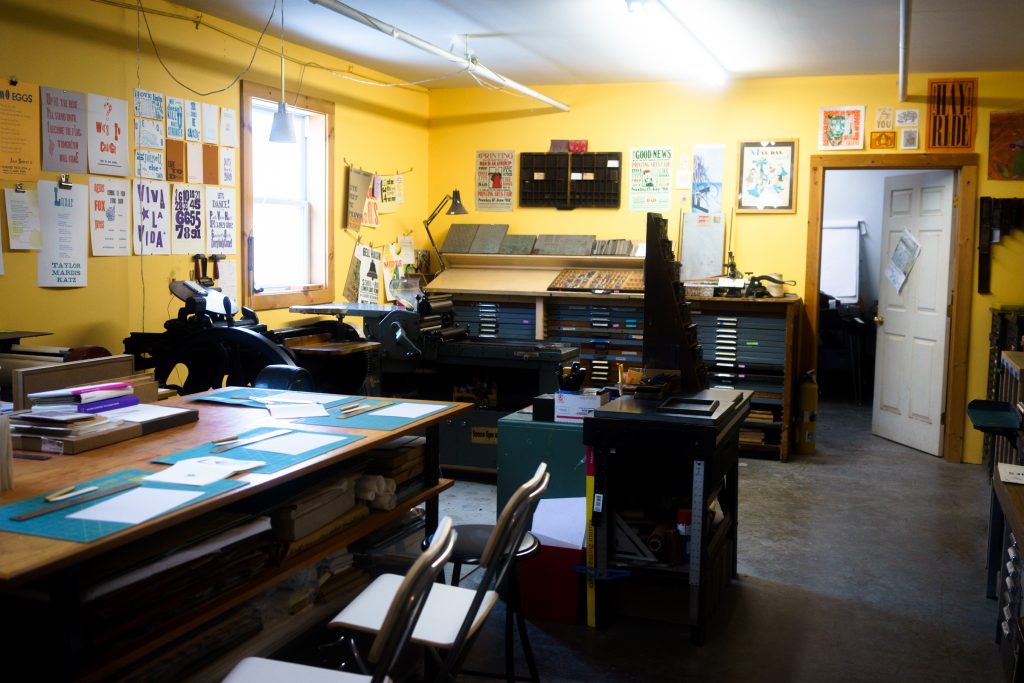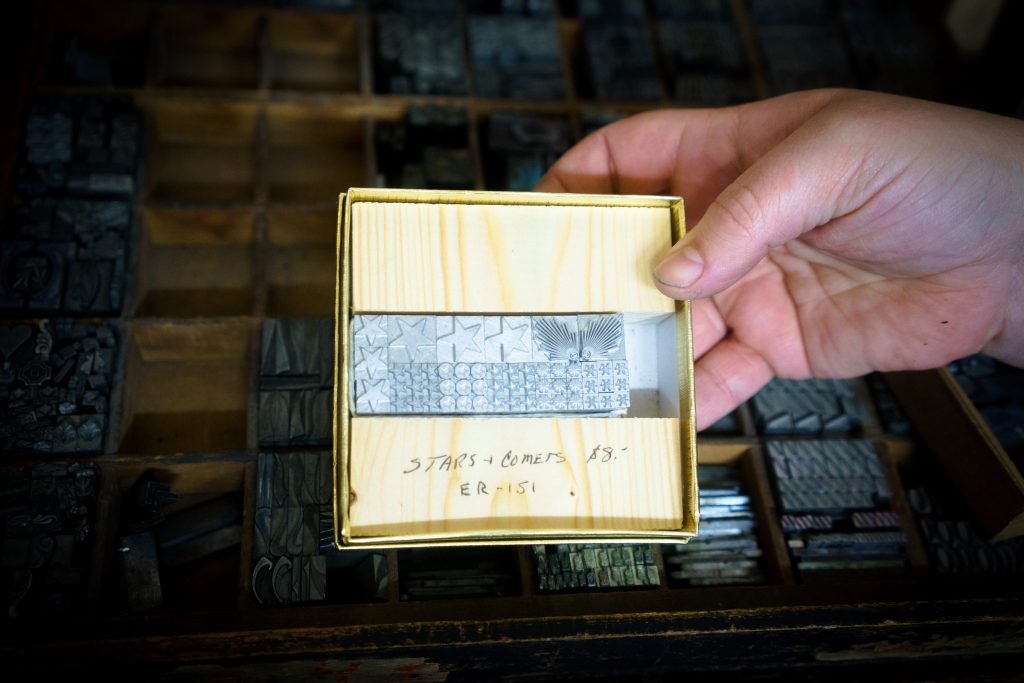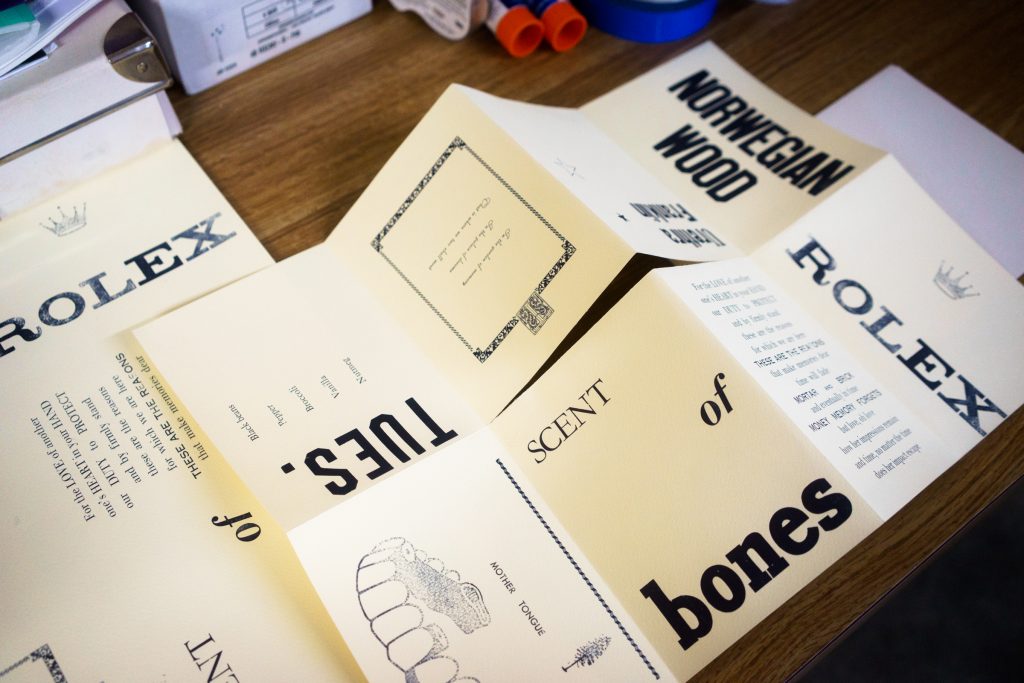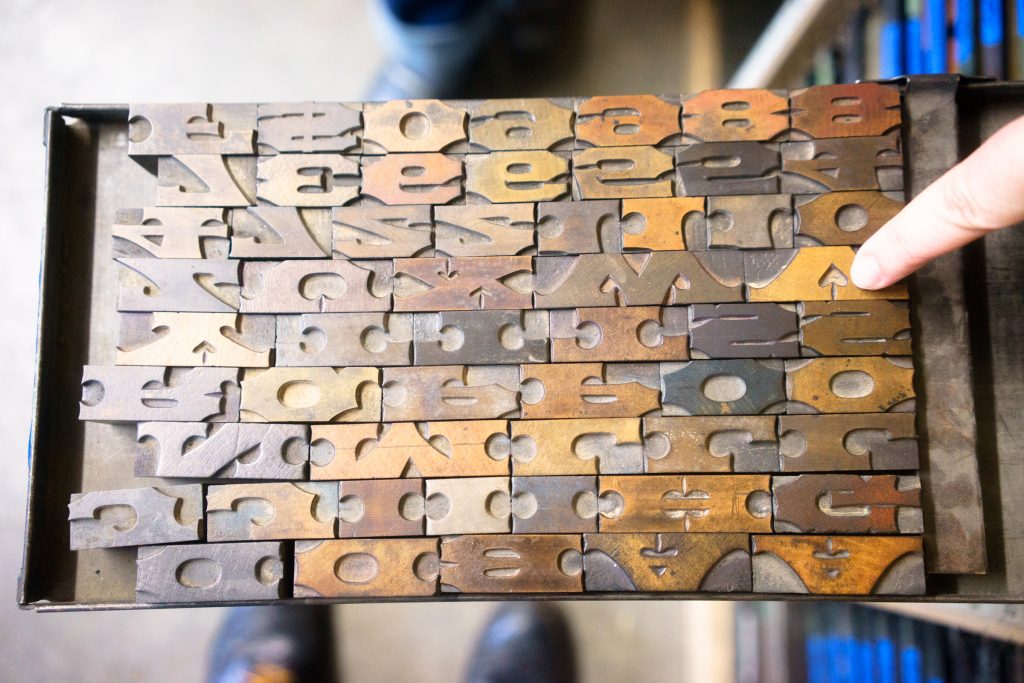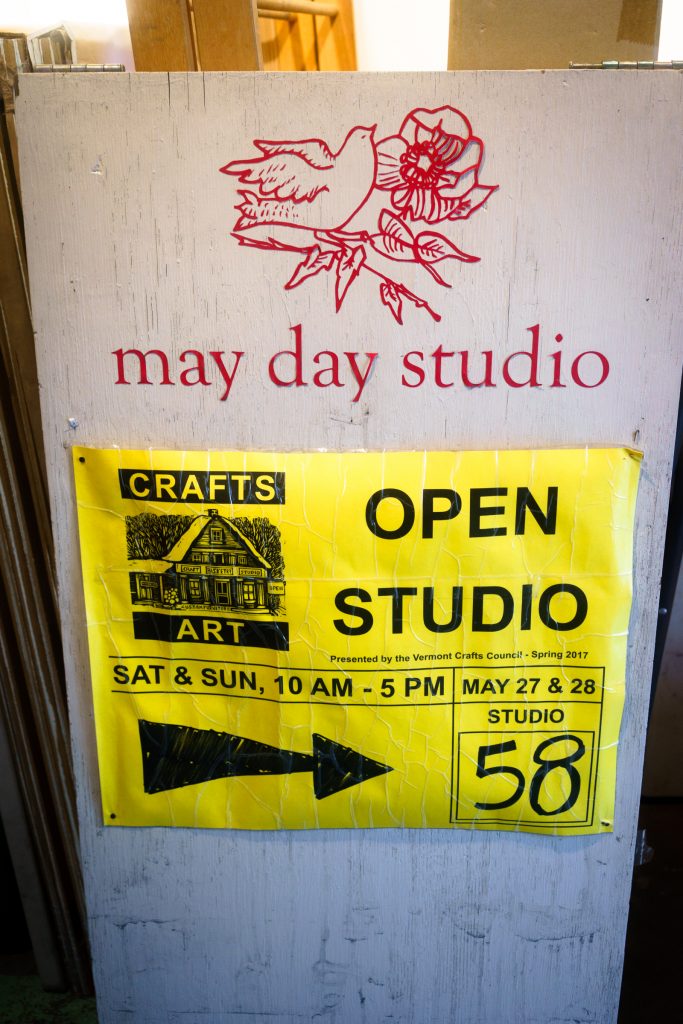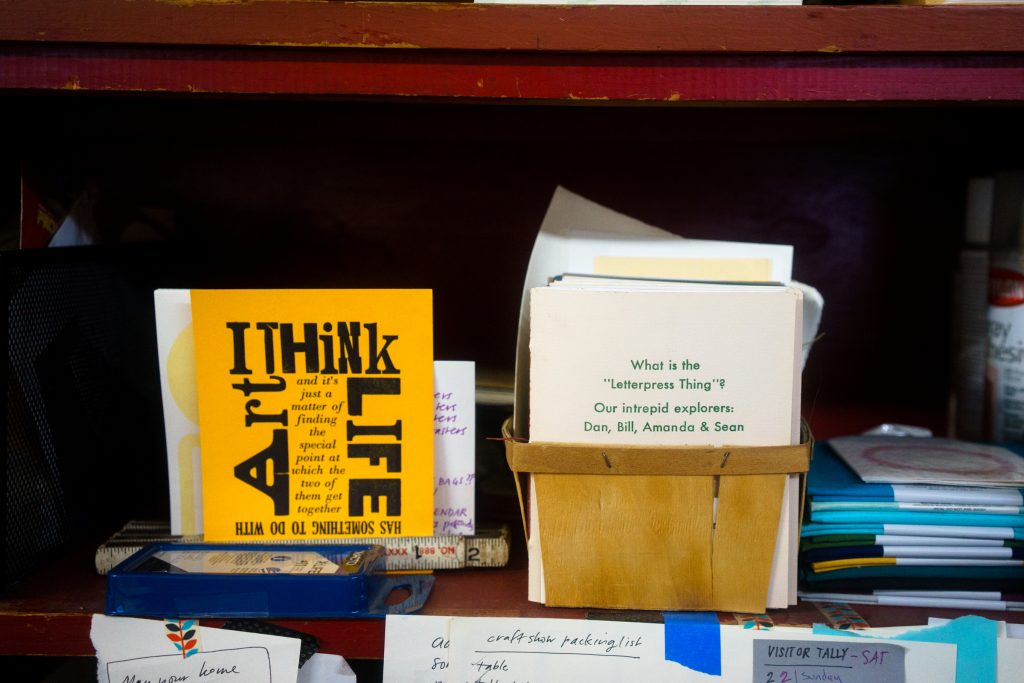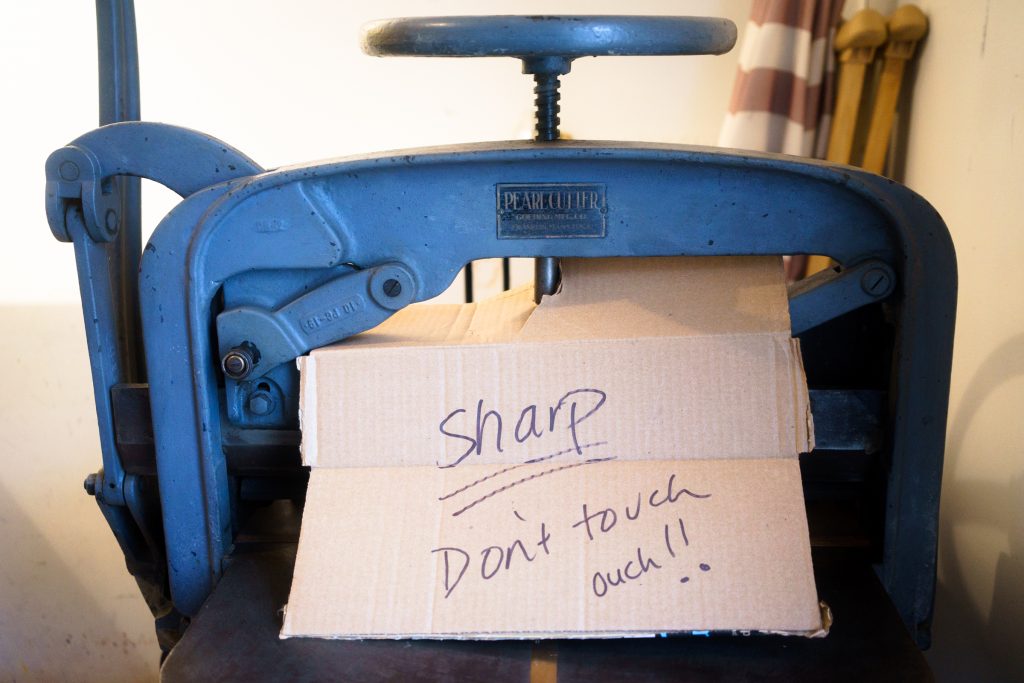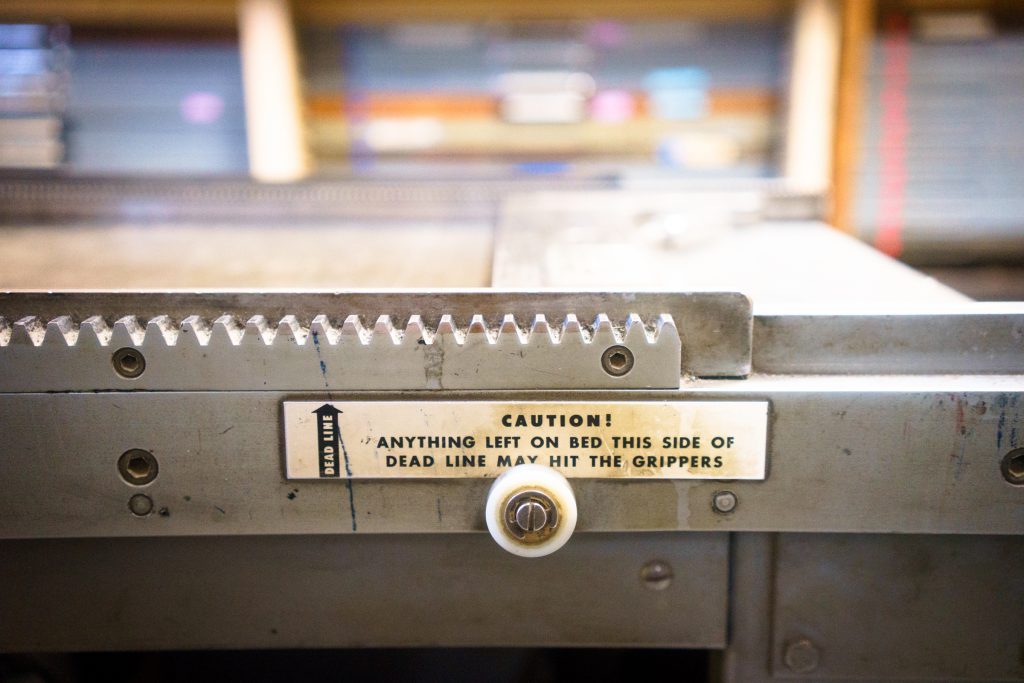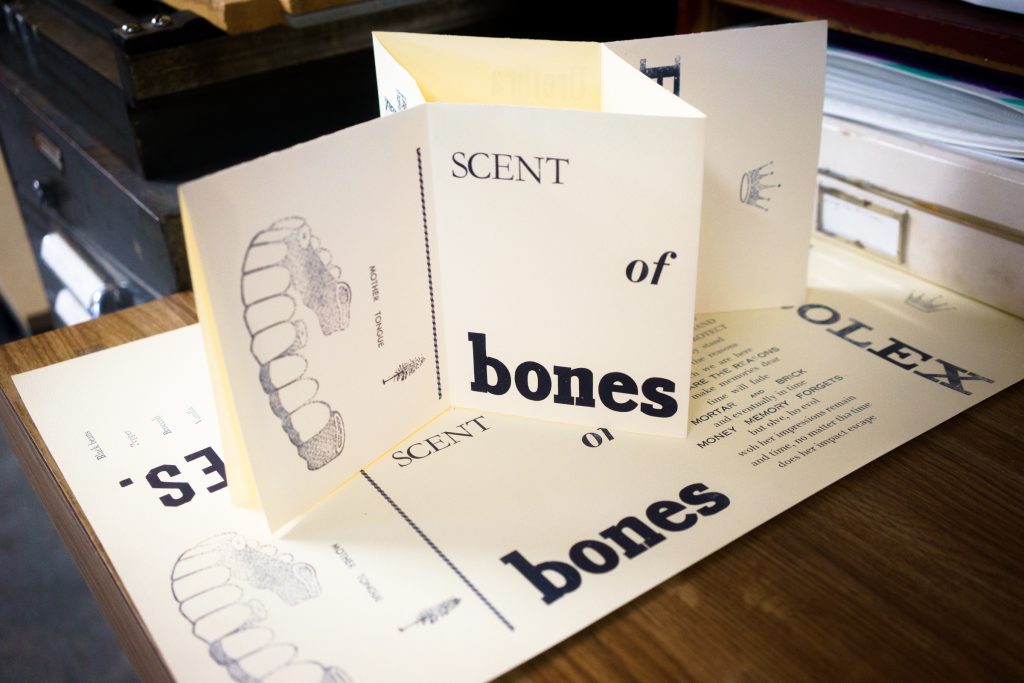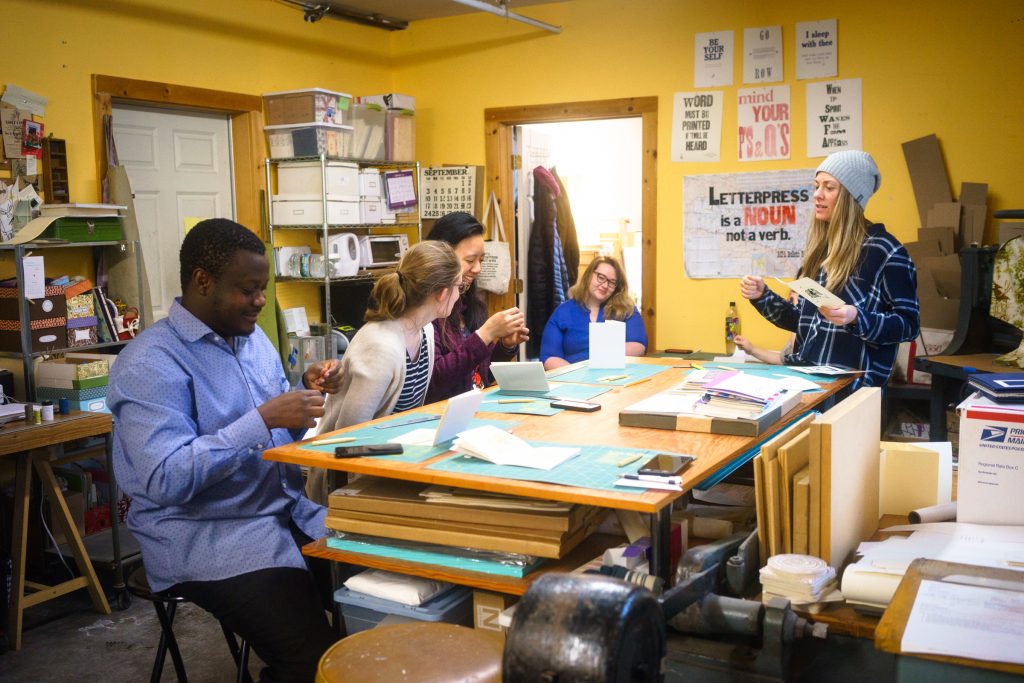A Visit to May Day Press, Your Friendly Neighborhood Letterpress Studio
Kelly McMahon first fell in love with the fine art of letterpress when she was in San Francisco attending the California College of the Arts for Creative Writing. She had set out to work on her poetry, but this centuries-old craft—once a necessity for the printed word, now an art form—called to her. “I was lucky enough to choose an art school that had an established printmaking program,” she said. “The grad programs were all interdisciplinary. I took a seminar on book arts and loved printing. I loved making text tangible.”
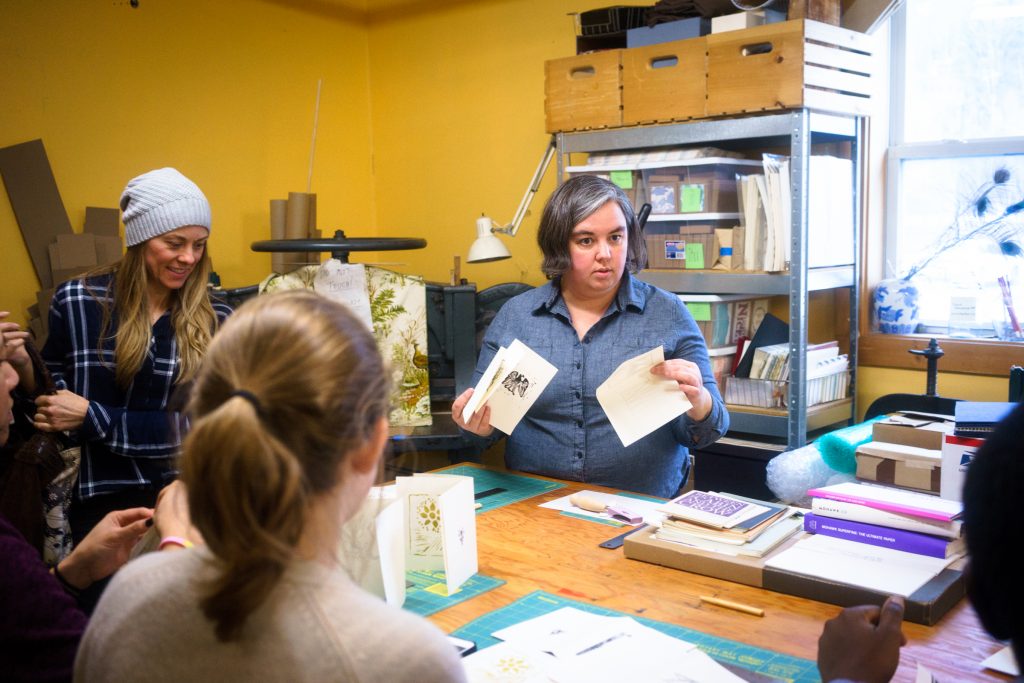
About ten years ago, she co-founded May Day Press with two artist friends here in Montpelier, Vermont. The 1st of May is her birthday—but it is also Beltane, the Gaelic May Day festival. “I’m not a real birthday person,” she said, “but in Celtic folklore, it’s the day when the fairies come out to dance.”
At May Day Press, McMahon designs wedding invitations, business cards, letterheads and envelopes, as well as the occasional concert poster. (Behind the rows of cabinets is a room full of musical instruments; local bands rehearse in the space on weekends.) She hosts events for the community to illuminate the art of letterpress. For the past three years, students from VCFA’s Writing and Publishing program have interned with her; this past year, Program Director Miciah Bay Gault reached out to McMahon and asked if she would be interested in teaching a course for the Spring 2018 semester.
So far, she’s enjoyed spreading the art form. Seven VCFA students took the course, and they read about artist’s books, studied the typography of the printed word, and dove into the form and function of intricate machinery. They even carved rubber stamps to learn relief printmaking. When I visited, they were finishing up a book sample and about to start on their final project: a class chapbook.

According to McMahon, there is a thriving printmaking culture in New England; in Western Massachusetts there is a clearinghouse, run by a former printmaker himself, who takes in old equipment when print shops close. He refurbishes them and sells them for what McMahon calls “a functional price tag.” That’s how she was able to acquire her Chandler & Price press, made in 1911 in Cleveland, Ohio, which she has owned since the studio was founded; with two hands free, one can print small pieces quickly. “Not a beginner press,” she said. For larger works, up to 14×18 inches, there’s the newest machine in the shop: a Vandercook proof press, built in 1968. With multiple rollers, she said, it provides plenty of coverage across these larger surfaces. And it’s much easier for beginners to get into the ink.
To dive into the ink is a tactile experience. Behind are racks and racks of cabinets, each cabinet holding cases, each case holding type, each type containing not just letters but also dingbats, ellipses, blackletters, and fun symbols. They are meticulously organized: some in baby food jars, most in soft wooden wooden drawers that squeak when you open them. Their metal is cool to the touch, tarnished by ink and the oil from one’s fingertips. The metal clanks together in the machine, and when the worn metal lever is pulled, actual, shiny wet ink is laid down on the paper right before your eyes. For a class that usually types on computers and merely hits “Print,” this is what McMahon was eager to show us: the text, made tangible.
